Viking Era Beads
In addition to the research on bead furnaces I am, of course
looking at the beads themselves. Callmer's book on the topic
has a LOT of useful information. I pumped that information
into an excel spreadsheet and started to run some numbers. A
caveat - Callmer ignores amber beads, metal beads, and finds with less
than 10 beads - this will skew the numbers.
To help understand how this skew will work, here are some alternative
numbers from Brondsted's survey of Danish Viking era graves (1936 -
Acta Archaeologica VII). The information is a little sketchy but he
summarizes 345 graves including 314 inhumations and 41 cremations. Of
those graves 49 (14.2%) have 1 or more bead. 35 of those 49 have known
numbers of beads (the others say only "beads"). Only 7 graves (2%) have
10 or more beads. For the 35 graves with known numbers the average
(
mean)
number of beads is 8. The
median
number of beads is 3, and the
mode
is 1. Of the 23 beads of known type & number 17 are glass,
4 amber, 1 rock crystal, and 1 stone. Clay beads are also mentioned but
without specific numbers. So please remember that Callmer's information
below likely only applies to 2% of the finds, and ignores 17% of the
beads (amber). Still it is the best information we currently have.
Some day it would be nice to revisit each of the 299 finds in
Callmer and add the additional information.
Callmer also uses
intensity rather than raw numbers
of beads within his work. This number combines information about the
finds, with information about the numbers of beads to provide more
information. He calculates this using the following formula:
sqrt ( (number of finds of a bead type / total number of finds) (%)
X (number of beads of a bead type / total number of
specified beads) (% ) ) The first version of this page I did continued to use those intensity numbers. While 'intensity' has a weakness since you can't simply say 'X% of beads were...' it
does have a value in that it combines finds and bead numbers to provide something closer to 'popularity'. The older version of the page based on those numbers
is still available
here.
This article works specifically with the numbers of beads found. Thus in this article
and on the plates below when I show 3.4% this means this type of bead accounted for 3.4% of the total
beads found in this period.
This article is divided into four sections:
- Fun with numbers
- A look at some interesting numbers including number of beads per find, and bead size.
- Colours
- What colour was the most popular?
- Bead Recognition Charts
- What beads are most common when and what do they look like?
- How do I use this
- This section wraps everything up into a bundle to help you go shopping.
Fun with Numbers
Total number of finds: 299
Total number of beads: 14876
Largest Find: 1216
Smallest Find: 10
| Period | Number of Beads | Number of Finds |
|---|
| BP I (790-820) | 2100 | 49 |
| BP II (820-845) | 1483 | 41 |
| BP III (845-860) | 1792 | 29 |
| BP IV (860-885) | 1193 | 21 |
| BP VII (885-915) | 3124 | 16 |
| BP VIII (915-950) | 1165 | 36 |
| BP VI (950-960) | 1140 | 28 |
| BP IX (960-980) | 1664 | 49 |
| BP XII (Post 980) | 315 | 10 |
| No Period | 900 | 20 |
The average (
mean)
number of beads in each find is 49.8. (This is the total number of
beads divided by the total number of finds.)
The 5 largest finds have 1216, 603, 402, 365, and 304 beads. Those 5 finds are so large that they add almost 10 beads to the 'average' number (without those 5 it would be 40.1).
There are 21 finds with 100 or more beads (7.0% of the finds). More than half of those (12) are less than 150 beads.
The
Median
number of beads in each find is 32. (Half the finds have more than 32
beads, half the finds have less.) Let's just take a moment and consider the implication of that a little bit further. Remember that according to Brondsted's numbers Callmer is only looking at the top 2% of the burials. If you are wearing more than 32 beads you are saying "I'm in the 1%". Those lovely necklaces with more than 150 beads? "I'm in the top 3% of the top 2%" or "I'm in the top 0.06% of vikings".
The
Modal number of beads per find is 17. (The most common number of beads in a find - 11 finds have 17 beads)
The second mode is 28 (10 finds have 28 beads)
There are 7 third modes (the next most common number of beads in a
find). These are groups of 9 finds with the same number of beads. Thus
the next most common number of beads is actually 7 different numbers.
There are 9 finds with 18 beads, 9 finds with 20 beads, 9 with 27, 29,
36, and 9 with 47 beads. That is quite a range (18-47). The average
(mean) of
those 7 numbers is 28.6 beads.
When we group the finds into ranges we very quickly see a pattern.
Less beads is more common.
| Number of beads |
Number of finds |
Percentage |
|
| 10-19 |
66 |
22% |
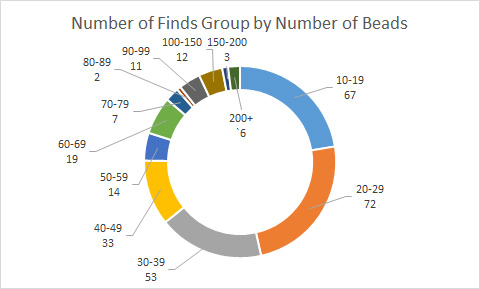 |
| 20-29 |
71 |
24% |
| 30-39 |
55 |
18% |
| 40-49 |
33 |
11% |
| 50-59 |
13 |
4% |
| 60-69 |
19 |
6% |
| 70-79 |
8 |
3% |
| 80-89 |
2 |
1% |
| 90-99 |
11 |
4% |
| 100-149 |
12 |
4% |
| 150-199 |
3 |
1% |
| 200+ |
6 |
2% |
The next logical question is 'did the number of beads per find change over time'. In cases like this visual images are often a big help.
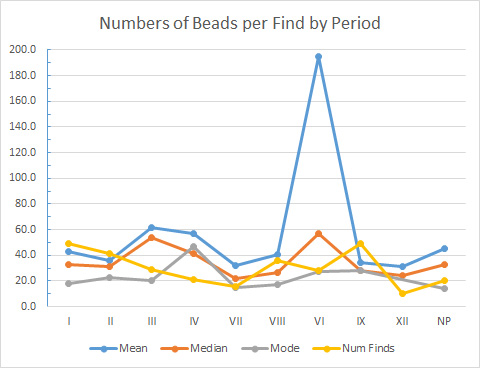
That spike in BP VI is pretty interesting isn't it? Turns out the 1st, 2nd, 4th, and 5th largest finds are all in BP VI. That messes up the 'average'
number. This is one reason why I keep referring to 'mean', 'median', and 'mode'. Let's clean that graph up by just looking at the median and number of finds.
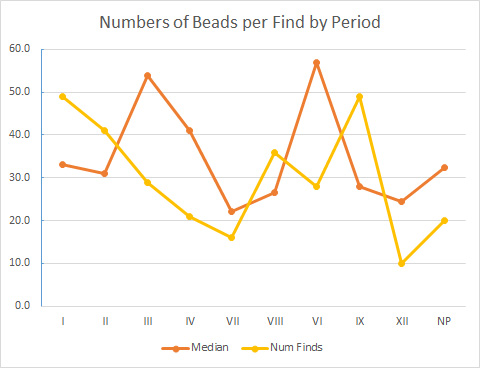
That helps clear things up a bit. It looks like BP III and VI thought more beads was good while the other periods thought 'less was more'. But because it is always fun to
make people think around corners - I'll ask a question. Was this because in those periods the person buried had worn more beads during their life? Or was it because their kids thought 'less was more'
and hence put more beads into mom's grave since they weren't going to wear them themselves.
Finally we can look at how the ranges covered above change over time. Each of these thumbnails links to an image of a single period. This
video combines them all so you can watch the groups change.
| BP I (790-820) | BP II (820-845) | BP III (845-860) |
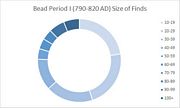 | 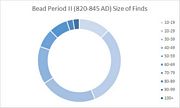 |
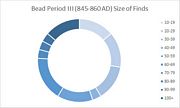 |
| BP IV (860-885) | BP VII (885-915) | BP VIII (915-950) |
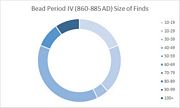 |
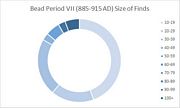 | 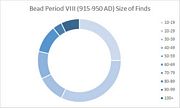 |
| BP VI (950-960) | BP IX (960-980) | BP XII (Post 980) |
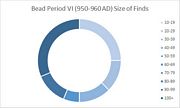 | 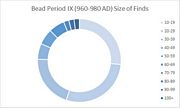 |
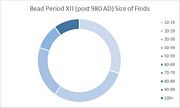 |
Sizes of Beads
Callmer gives bead size by a range. i.e. a bead with a diameter (size of
bead perpendicular to the string) of
his type "162" means its diameter is 3-5mm. To make numbers work I
assigned this a "minimum" of 3mm, "avgerage" of 4mm, and "maximum" of
5mm. For each class
of bead these numbers are listed (e.g. B392 beads are 12,13,14 mm
diameters). For each find a weighted average, minimum, and maximum was
created.
The minimums for each find are then averaged to obtain the "average
minimum" below. The "average maximum" and "average average"
(a fun concept) are calculated in a similar fashion.
Average Average Diameter: 9.9 mm (median 9.2, mode 9)
Average Minimum Diameter: 7.1 mm (median 6.2, mode 6)
Average Maximum Diameter: 12.2 mm (median 11.6, mode 11)
For those following along in imperial units 12mm is a little less
than ½".
What does all that mean?
While it is possible that a person would wear a huge number of beads
the most likely bead necklaces are much smaller than you
see in the modern re-enactment and museum interpreter communities. A necklace of 20-30 beads
ranging from 7 to 12 mm (¼ to ½ inch) in diameter
would appear to be "common" among
those who could afford a collection of beads. Remember that this
sampling EXCLUDES finds with less than 10 beads - i.e. it likely
already excludes the lower classes, most men, and focuses on the more
wealthy burials.
What colour was the most Popular? How common are decorated beads?
Another interesting finding is the colour/type of bead. I
split the beads into five main groups:
- Monochrome
- Single colour beads including those with metallic foil
embedded in them
- Multicolour
- This includes beads with simple lines, simple colour dots,
and the fancy millifiore beads
- Crystal
- Crystal
- Carnelian
- Carnelian
- Stone
- Jade, Amethyst
The different groups have very different percentages of the number of beads when looked at over time.
| AD |
790 |
820 |
845 |
860 |
885 |
915 |
950 |
960 |
980 |
| BP |
I |
II |
III |
IV |
VII |
VIII |
VI |
IX |
XII |
| Monochrome |
78.0% |
83.9% |
95.1% |
68.1% |
65.2% |
48.1% |
96.3% |
78.2% |
76.7% |
| Multicolour |
21.5% |
14.3% |
4.2% |
16.6% |
34.5% |
17.9% |
1.2% |
5.2% |
11.5% |
| Crystal |
0.4% |
0.7% |
0.2% |
6.0% |
0.2% |
16.2% |
1.3% |
9.2% |
5.2% |
| Carnelian |
0.0% |
1.1% |
0.5% |
9.2% |
0.0% |
17.6% |
1.2% |
7.5% |
6.7% |
| Stone |
0.1% |
0.0% |
0.1% |
0.0% |
0.0% |
0.2% |
0.0% |
0.0% |
0.0% |
As always pictures help, but I'm not sure which of these two works best.
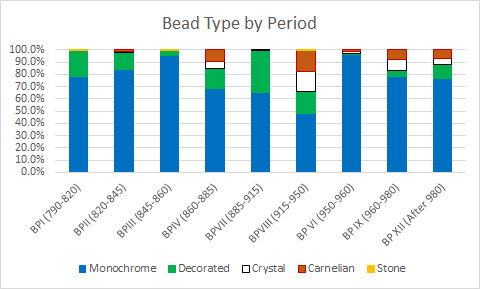
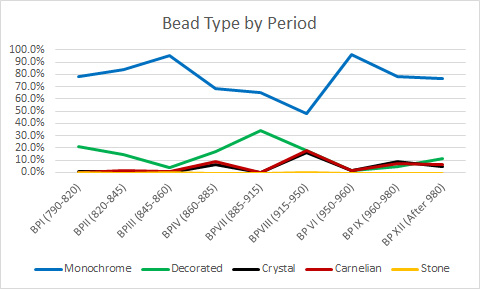
The first thing that jumps out is that decorated beads are
uncommon. They peak between 885 and 915, amounting to just
over a third (34.5%) of the total number of beads found in that period, but their average percentage is only 14%. So all those fancy beads really are uncommon. If you think about that in terms of a 30 bead necklace that means on average there would only be 4 decorated beads. If you see a necklace with a dozen decorated beads it is pretty much a given it is from that 885-915 period.
224 of the 299 finds have multicoloured beads (75%). Of those finds
with multicoloured beads the average number again presents interesting
data. The 'mean' (which is 'average' to most people) is 6.7
multicoloured beads. The median is 4 (half the finds have less than 4,
half have more). The mode (most common number) is 1 (38 of the finds
have a single multicoloured bead - that means 17% of the finds that
have a multicoloured bead have only the one). The 2nd mode (next most
common number) is 2 beads. 37 finds have 2 multicoloured beads (16.5% of
the finds with multicoloured beads). That means a third of the finds
with multicoloured beads have only 1 or 2 multicoloured beads. The
highest number of multicoloured beads in a single find is 81. That find
is one of the rare ones with 134 beads. Only 39 finds (17%) have more
than 10 multicoloured beads.
With regards to my own time of interest (BP IV 860-885), when I put the
bead types in order of number of beads, some interesting things
pop out. The first multi-coloured type is #8 in the list - B531 one or two
colours of lines around a bead. The next is #11 (B616 - single colour dots)
and #16 (B056 - more simple lines). To find a millifiore bead type we have to
run down to 29th, and those are simple plain beads with a millifiore
eye added. The really pretty millifiore beads start at #65.
Colour
Colour means we need a new
table, more pretty pictures, and some more explanations. Again lets use
Bead Period IV as an example. The first column shows the percentage of
beads which have a base colour identified. 60.7% in this case.
Beads might not have a base colour identified when they are stone, or
made entirely of reticela or millifiore for example. Since we know that 15% of the
beads in BP IV are stone beads, 60.7% with an identified base
colour would seem reasonable.
Within that 60.7% the remaining columns identify the percentage of the
beads with the base colour noted in the first row. This allows us
to note that greyish green beads are most common (24.5%)
followed closely by pale turquoise (17.7%), dark blue (17.5%), and white/greyish white (14.1%).
Together these four base colours account for just under 75%,
with the remaining 17 colours providing the final 25%.
In the bead charts I use two concepts to look at comparative numbers of beads. Diagnostic beads are those that occur only during one specific period. Semi-Diagnostic beads are those that are at least twice as common in one period as any other period. In both cases they provide information that appears to be date specific. The same concepts can be applied to colour as well. If a colour only occurs in one period, or if it is twice as common in one period compared to others than that is work noting.
There are no diagnostic colours. Forget-me-not blue, and blueish grey beads are semi-diagnostic for period I. Medium green, dark green, or Malva (reddish purple) beads are all semi-diagnostic for period VII.
This video combines all of the images so you can watch the groups change.
| Period |
Pie
Chart |
% with base colour |
noncoloured |
white/grey white |
grey |
black |
yellow |
greyish yellow |
orange |
red |
yellow brown |
brownish red |
dark brown |
malva (reddish violet) |
dark blue |
forget-me-not blue |
bluish grey |
bluish green |
pale turquoise |
light green |
medium green |
dark green |
greyish green |
silver |
| I |
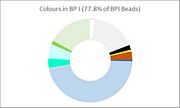 |
77.81% |
2.02% |
17.07% |
0.00% |
1.84% |
0.55% |
0.12% |
0.24% |
0.37% |
0.18% |
2.51% |
0.12% |
0.37% |
46.21% |
0.73% |
3.49% |
5.69% |
0.00% |
0.00% |
1.47% |
0.00% |
17.01% |
0.00% |
| II |
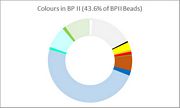 |
43.56% |
1.08% |
16.41% |
0.00% |
0.46% |
2.94% |
0.31% |
0.46% |
1.08% |
0.46% |
5.88% |
0.00% |
1.86% |
48.30% |
0.15% |
0.93% |
8.51% |
0.00% |
0.00% |
1.24% |
0.00% |
9.91% |
0.00% |
| III |
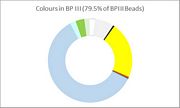 |
79.46% |
2.11% |
7.30% |
0.00% |
0.49% |
21.49% |
0.07% |
0.14% |
0.00% |
0.00% |
0.56% |
0.00% |
0.14% |
60.04% |
0.00% |
0.00% |
1.76% |
0.42% |
0.00% |
3.30% |
0.07% |
2.11% |
0.00% |
| IV |
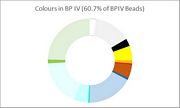 |
60.69% |
2.49% |
14.09% |
0.00% |
2.90% |
5.52% |
0.14% |
1.10% |
0.41% |
0.00% |
5.39% |
0.00% |
0.69% |
17.54% |
0.00% |
0.55% |
5.52% |
17.68% |
0.00% |
1.52% |
0.00% |
24.45% |
0.00% |
| VII |
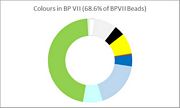 |
68.63% |
1.73% |
8.82% |
0.00% |
3.87% |
7.79% |
0.09% |
0.19% |
0.00% |
0.00% |
0.37% |
0.00% |
4.52% |
17.91% |
0.00% |
0.00% |
7.37% |
0.19% |
0.00% |
45.99% |
0.19% |
0.98% |
0.00% |
| VIII |
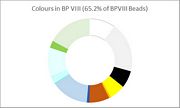 |
65.15% |
10.01% |
19.24% |
0.00% |
6.59% |
6.06% |
0.00% |
0.79% |
0.13% |
0.13% |
7.51% |
0.26% |
0.66% |
14.49% |
0.00% |
0.13% |
3.16% |
10.94% |
0.00% |
2.77% |
0.00% |
17.13% |
0.00% |
| VI |
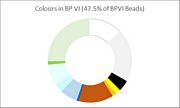 |
47.46% |
12.75% |
20.52% |
0.00% |
4.25% |
2.03% |
0.55% |
1.11% |
0.37% |
0.00% |
12.94% |
0.00% |
0.74% |
6.65% |
0.00% |
0.00% |
3.33% |
8.32% |
0.00% |
1.29% |
0.00% |
25.14% |
0.00% |
| IX |
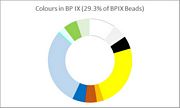 |
29.33% |
10.04% |
5.53% |
0.00% |
4.92% |
24.39% |
0.00% |
2.66% |
0.00% |
0.00% |
4.51% |
0.20% |
4.71% |
29.51% |
0.20% |
0.20% |
0.61% |
2.05% |
0.00% |
5.33% |
0.00% |
5.12% |
0.00% |
| XII |
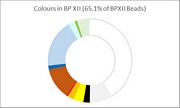 |
65.08% |
41.46% |
8.78% |
0.00% |
2.44% |
3.90% |
0.00% |
2.44% |
0.49% |
0.00% |
12.20% |
0.00% |
1.46% |
18.05% |
0.49% |
0.00% |
1.46% |
0.98% |
0.00% |
0.98% |
0.00% |
4.88% |
0.00% |
| No Period |
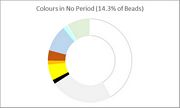 |
14.33% |
41.86% |
24.03% |
0.00% |
1.55% |
6.20% |
0.00% |
1.55% |
0.00% |
0.00% |
3.88% |
0.00% |
0.00% |
10.08% |
0.00% |
0.00% |
1.55% |
0.78% |
0.00% |
0.00% |
0.00% |
8.53% |
0.00% |
| Overall |
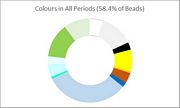 |
58.4% |
5.27% |
12.80% |
0.00% |
2.85% |
8.43% |
0.13% |
0.61% |
0.23% |
0.08% |
3.60% |
0.06% |
1.81% |
31.90% |
0.17% |
0.79% |
4.84% |
3.21% |
0.00% |
13.02% |
0.06% |
10.14% |
0.00% |
I have also been asked about the colours and clarity of the glass used. This table lists the numbers of beads found by colour and transparency.
| Translucency |
noncoloured |
white/grey white |
grey |
black |
yellow |
greyish yellow |
orange |
red |
yellow brown |
brownish red |
dark brown |
malva (reddish violet) |
dark blue |
forget-me-not blue |
bluish grey |
bluish green |
pale turquoise |
light green |
medium green |
dark green |
greyish green |
silver |
| Transparent |
375 |
0 |
0 |
0 |
26 |
0 |
0 |
1 |
7 |
0 |
0 |
157 |
2709 |
0 |
1 |
233 |
0 |
0 |
59 |
0 |
503 |
0 |
| Semi-Transparent |
83 |
108 |
0 |
0 |
0 |
0 |
0 |
3 |
0 |
0 |
0 |
0 |
63 |
11 |
0 |
185 |
0 |
0 |
19 |
0 |
23 |
0 |
| Opaque |
0 |
1005 |
0 |
248 |
586 |
11 |
53 |
16 |
0 |
313 |
5 |
0 |
1 |
1 |
68 |
3 |
0 |
0 |
43 |
5 |
355 |
0 |
Shape
Like colour, shape means we need a new
table, more pretty pictures, and some more explanations. Again lets use
Bead Period IV as an example. The first column shows the percentage of
beads which have a shape identified. 76.7% in this case.
Beads might not have a shape identified if that is not what defines them. For example Class C beads are "Warm-made decorated folded glass beads are not divided into individual types" (Callmer 1977) thus their shape is not important.
Within that 76.7% the remaining columns identify the percentage of the
beads with the shape noted in the first row. This allows us
to note that rounded with plane parallel ended beads are most common (59.23%)
followed closely by some types made both of rounded or cylindrical beads (13.44%), rounded (10.16%).
Together these three shapes account for just under 85%,
with the remaining shapes providing the final 15%. Type 126 (rounded with torodated ends) is 'semi-diagnostic' for Period III. Type 134 (Rectangular prismatic) is semi-diagnostic for period VIII. Type 135 (rectangular prismatic with cut corners) is semi-diagnostic, and 139 (octagonal rectangular prismatic) is diagnostic for period VI. Type 130 (Cylindrical with oval cross-section) and type 143 (symmetrical hexagonal bipyramidal) are semi-diagnostic, and type 133 (truncated bicones with bases as the ends) is diagnostic for period IX. Type 131 (truncated cone) is semi-diagnostic for period XII.
I haven't yet come up with a good image for the shape data.
| Period |
Overall % |
121 |
122 |
123 |
124 |
125 |
126 |
127 |
129 |
130 |
131 |
132 |
133 |
134 |
135 |
136 |
137 |
138 |
139 |
140 |
141 |
142 |
143 |
144 |
145 |
146 |
147 |
148 |
122, 124 |
122, 127 |
| |
|
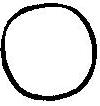 |
 |
 |
 |
 |
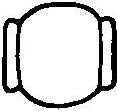 |
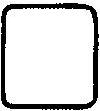 |
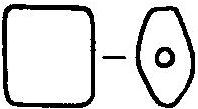 |
 |
 |
 |
 |
 |
 |
 |
 |
 |
 |
 |
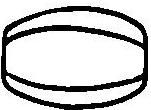 |
 |
 |
 |
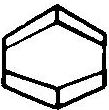 |
 |
 |
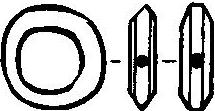 |
  |
  |
| I |
83.67% |
0.17% |
5.46% |
0.00% |
76.89% |
2.90% |
0.00% |
2.73% |
0.06% |
0.00% |
0.06% |
2.33% |
0.00% |
0.28% |
2.22% |
0.00% |
0.00% |
0.00% |
0.00% |
0.00% |
0.00% |
0.00% |
0.00% |
0.00% |
0.00% |
0.00% |
0.00% |
0.00% |
6.49% |
0.40% |
| II |
83.88% |
1.53% |
54.74% |
0.08% |
29.10% |
1.61% |
0.24% |
3.70% |
0.16% |
0.00% |
0.08% |
0.72% |
0.00% |
0.24% |
1.37% |
0.00% |
1.21% |
0.00% |
0.00% |
0.00% |
0.00% |
0.00% |
0.00% |
0.00% |
0.00% |
0.00% |
0.00% |
0.00% |
2.89% |
2.33% |
| III |
88.84% |
0.69% |
11.18% |
0.19% |
9.61% |
0.50% |
0.82% (SD) |
0.94% |
0.00% |
0.00% |
0.00% |
0.25% |
0.00% |
0.06% |
0.06% |
0.00% |
0.94% |
0.00% |
0.00% |
0.00% |
0.00% |
0.00% |
0.00% |
0.00% |
0.00% |
0.00% |
0.00% |
0.00% |
0.57% |
74.18% |
| IV |
76.70% |
3.50% |
10.16% |
0.44% |
59.23% |
1.09% |
0.00% |
2.19% |
0.00% |
0.00% |
0.11% |
0.44% |
0.00% |
0.77% |
4.48% |
0.00% |
0.00% |
0.00% |
0.00% |
0.33% |
0.33% |
0.00% |
0.00% |
0.00% |
0.00% |
0.00% |
1.86% |
0.44% |
1.20% |
13.44% |
| VII |
75.38% |
1.10% |
12.70% |
0.38% |
3.86% |
1.02% |
0.04% |
0.38% |
0.00% |
0.04% |
0.00% |
0.08% |
0.00% |
0.21% |
1.53% |
0.00% |
0.04% |
0.00% |
0.00% |
0.00% |
0.34% |
0.00% |
0.00% |
0.00% |
0.00% |
0.00% |
0.47% |
0.08% |
0.08% |
77.62% |
| VIII |
77.42% |
0.00% |
8.98% |
1.00% |
59.65% |
7.10% |
0.22% |
9.76% |
0.11% |
0.00% |
0.11% |
0.55% |
0.00% |
1.77% |
0.78% |
0.00% |
0.44% |
0.00% |
0.00% |
0.00% |
0.00% |
0.00% |
0.00% |
0.00% |
0.00% |
0.00% |
0.00% |
0.00% |
4.66% |
4.88% |
| VI |
67.37% |
6.90% |
9.38% |
0.13% |
53.13% |
5.99% |
0.00% |
3.65% |
0.00% |
0.00% |
0.13% |
0.52% |
0.00% |
0.13% |
9.51% |
0.00% |
0.13% |
0.00% |
0.26% |
0.00% |
0.13% |
0.52% |
0.00% |
0.00% |
0.00% |
0.00% |
4.30% |
0.78% |
3.52% |
0.91% |
| IX |
80.41% |
7.62% |
68.76% |
0.45% |
8.97% |
4.71% |
0.00% |
0.90% |
0.00% |
0.15% (SD) |
0.07% |
0.00% |
0.07% |
0.22% |
3.59% |
0.00% |
0.07% |
0.00% |
0.00% |
0.00% |
0.52% |
0.00% |
0.07% |
0.00% |
0.00% |
0.00% |
2.24% |
0.37% |
0.07% |
1.12% |
| XII |
75.24% |
5.06% |
18.57% |
0.00% |
63.29% |
3.80% |
0.00% |
1.69% |
0.00% |
0.00% |
0.42% |
2.11% |
0.00% |
0.42% |
1.69% |
0.00% |
0.42% (SD) |
0.00% |
0.00% |
0.00% |
0.00% |
0.00% |
0.00% |
0.00% |
0.00% |
0.00% |
2.11% |
0.00% |
0.00% |
0.42% |
| NP |
82.33% |
17.54% |
3.51% |
0.13% |
13.63% |
0.54% |
0.00% |
12.82% |
0.00% |
0.00% |
0.00% |
0.40% |
0.00% |
0.00% |
36.30% |
0.00% |
0.00% |
0.00% |
0.00% |
0.40% |
1.48% |
1.62% |
0.00% |
0.27% |
0.54% |
0.00% |
4.99% |
3.64% |
0.27% |
1.89% |
| ALL |
79.65% |
3.27% |
21.01% |
0.29% |
32.21% |
2.52% |
0.16% |
3.08% |
0.03% |
0.03% |
0.06% |
0.65% |
0.01% |
0.35% |
4.52% |
0.00% |
0.32% |
0.00% |
0.02% |
0.05% |
0.25% |
0.14% |
0.01% |
0.02% |
0.03% |
0.00% |
1.12% |
0.37% |
2.06% |
27.42% |
Bead
Recognition Charts
The preferred types/styles of beads seem to undergo shifts
during the period of the viking age. To help understand this I
colourized Callmer's plates of beads. Colourizing has
problems due to:
- Inaccuracies
- In the black/white versions there is sometimes not enough
definition to know what colour should be used. See beads G031:2
and G031:7 in plate 19 for an example.
- Errors
- Consider bead class B110 as seen in Colour Plate I, and Plate 7. There is a mismatch.
In addition to those problems please note that the colours I selected are just my choices based
roughly on the 4 colour plates in the book, they are NOT supported by a colour
analysis. Finally note that the process I used to colourize makes
all of the colours appear as solid blocks. The watercolours in
the book (Colour Plates 1-4) seem to show a range of colours within
each colour block. It is likely that the variation is just the amount
of water in the paint (except where it is deliberately used to show
facets), but since I can't know if the artist did it intentionally it
should be noted. As a summary please use extreme caution using these as
documentation.
With these concerns in mind I created some bead recognition charts. These
charts collect beads for a given period based on how many of that type were found in that period. I took those
numbers and grouped them into Very Common (≥125), Common (≥50), Less Common (≥20),
Uncommon (≥2), and Trace (single beads).
Based on the numbers of beads I have also marked some beads:
- Diagnostic
- This is the only period where this bead is found. This means that if you see that kind of bead on a necklace it
pretty much guarantees that it belongs to that period.
- Semi-diagnostic
- The number of beads found in this period is at least twice the
number found in any other period, and is at least 3 beads.
Finally it is worth mentioning is that Callmer has a method of
drawing. The string always goes across the page.
Thus diameter is measured vertically on these pages, length
is horizontal. On the charts I show some of his information.
The bead category (e.g. A020), the colour, and the clarity. (eg. Yellow T. = yellow background
colour and transparent). ST is semi-transparent, and O is
opaque. Callmer made the T/ST/O choice by holding the bead up
to a strong light. The diameter range (eg. 9-11 mm)
and the length/diameter ratio are also provided. (e.g. a length/diameter ration of >1/2 <1/1 means the
length of the bead is longer than half the diameter but not as long as
the diameter). The final piece of information is the percentage of the
beads provided by that bead class in that period.
BP I
790-820AD |
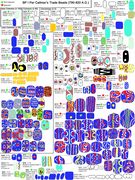 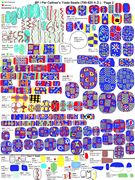
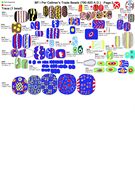 |
BP II
820-845AD |
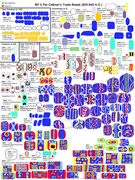 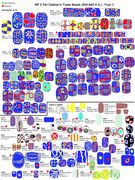 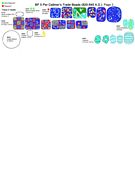
|
BP III
845-860AD |
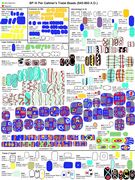 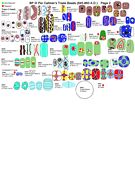
|
BP IV
860-885AD |
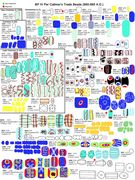 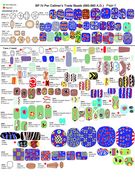 |
BP VII
885-915AD |
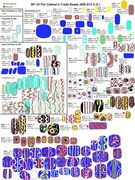 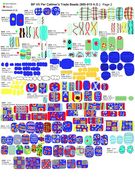 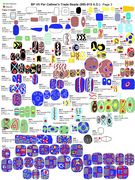 |
BP VIII
915-950AD |
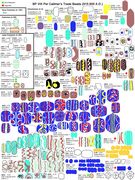 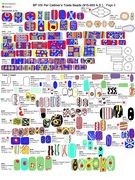
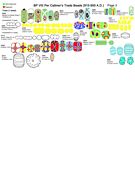 |
BP VI
950-960AD |
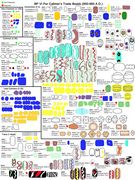 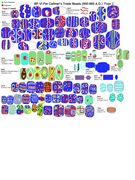 |
BP IX
960-980AD |
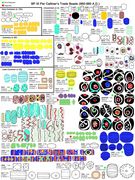 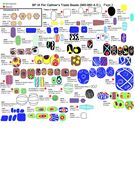 |
BP XII
(after 980 AD) |
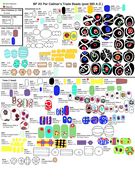 |
| Diagnostic Beads |
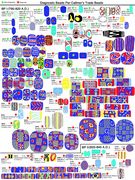 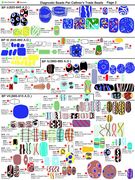 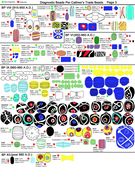 |
How do I use those?
I had someone ask how to use the information here and the charts.
I would suggest - review the "numbers" and "colours" sections above,
figure out the number of beads you want on the necklace, and do a
couple of quick calculations. Then print off the chart for the period
you care about, make some notes and take it into a bead store.
Let's use BP XII for our example this time and make a nice big necklace
with 30 beads.
From the second table we know that about 76.7% of the beads in this
period are monochrome beads, 6.7% are carnelian, 5.2% crystal, and 11.5% are
multicolour beads.
From the third table we know that most common colours are clear (41%),
dark blue (18%), dark brown (12%), and greyish white (8.8%), all other
colours are below 5%.
The bead-type percentages on the charts will guide you but I find that
reviewing the numbers above helps me put my mind in the right place -
mostly monochrome of these four colours.
Of that 30 beads we want about 2 carnelian and 1.5 crystal. So get 2 of each.
One S001, and one of either S011 or S012, one each of T007, T009, T010
although if you can't find one use a T001 instead.
We want four multicoloured beads - pretty much any of the ones on
the page will do, they are all about the same prevelance. If
you happen to see something like B236 or B505 do grab it as they are
diagnostic for this period.
The remaining 32 beads will be monochrome beads. A001 and A131 are
"most common" so try and grab 3 or 4 of each of them. A couple of A171s
and an R001 if you can find it would be next. A silver foil in clear
glass bead (E110), and another clear blown glass bead (E001), with one
each of A020, A090, A341, and A360. We now have 15-17 beads so we need
another 6 to 8 beads form the "uncommon" monochrome beads. E140 is nice
if you can find it. A290, A032, and A066 are diagnostic and thus good
targets. Any of the A, E, F, or Q beads will do at this level.
Pay for your purchases, sling the beads between your broaches and off
you go...
Less beads if you are poor, more if you are rich. Use up to 1200 beads
depending on how silly you are feeling and how "rare" you are
comfortable being.
Sources: Please see the
bibliography
 Dark Ages Re-Creation Company
Dark Ages Re-Creation Company





































































